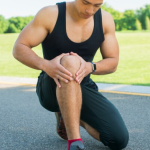Athletes put their bodies to the test daily by playing the sports they love. However, high-impact athletics can take a heavy toll on your body. Practices like athletic therapy provide prevention, rehabilitation, and maintenance care to improve athletes’ physical outcomes. What is Athletic Therapy? Athletic Therapy specializes in the prevention, evaluation and management of neuromusculoskeletal injuries (muscles, bones and joints, etc.), especially sports injuries. Their focus is on athletics and physical activity to help athletes return to their sport or individuals to return to an active lifestyle. They work with individuals of all ages and abilities, from amateur and professional athletes to the general population. During a session, they use a variety of techniques to help their patients manage and recover from injuries, improve their physical function and performance, and reduce the risk of future injuries. These techniques include manual therapy, exercise prescription, and modalities such as ultrasound and electrotherapy, and more. They…
Read More










